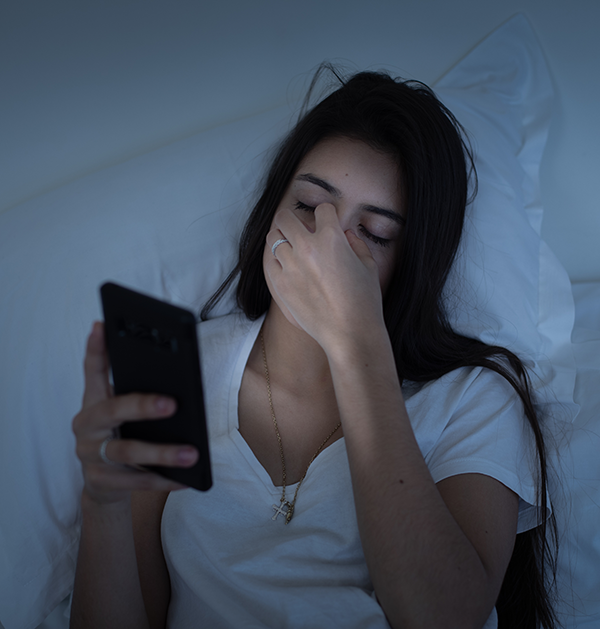Minimize Blue Light Exposure
Much like ultraviolet or UV light, blue light is a portion of the “visible light spectrum.” Overexposure may lead to cataracts and other eye diseases such as age-related macular degeneration (AMD). Sources of blue light include the sun, fluorescent and LED lighting, digital televisions, computers, smartphones, tablets, and other electronic devices. Since our exposure to high-intensity blue light has only been increasing in recent years, experts are still determining its long-term effects on our eye health. Still, there are steps we can use to understand risk, and there are small steps we can take to reduce our exposure.
Blue Light Affects Sleeping Patterns
Scientists also know that blue light affects our sleep. Sunlight contains blue tinted light, which signals to our brains that it is time to be awake. This is good during the day when we need to be alert. However, sleep researchers have found that blue light interferes with sleep patterns because it suppresses melatonin production. Melatonin is the key component in our chemistry that makes us wind down and feel sleepy. Too much blue light in the evening will reduce melatonin product and have negative consequences on your sleep. The effects of blue light on sleep have been studied and the results show how nighttime exposure to blue light made it more difficult to fall asleep and reduced rapid eye movement (REM) sleep. Reduced REM sleep leaves people feeling less rested in the morning, even if they get the same quantity of sleep as someone who read a book at night instead of doing an activity with blue light exposure, such as browsing information on their phone, tablet, or watching TV.


Long-Term Effects of Blue Light Exposure
Beyond sleep disturbances, many experts are concerned that blue tinted light exposure may be harmful to our vision. The American Macular Degeneration Foundation states that the most important hazard of blue light is retinal damage. The retina can be harmed by high-energy visible (HEV) radiation of blue/violet light that penetrates the macular pigment found in the eye, and the amount of retinal damage varies based on the wavelength of light, intensity, and time of exposure. It’s not clear how much blue light from screens can cause harm to the eyes. CFL lightbulbs emit much more blue light than the screen on a smartphone, for example, and sunlight is still the biggest contributor of blue light.
What does this mean for you? It’s critical to protect your eyes from the sun. Wearing a hat with a brim, and always using UV-blocking sunglasses is crucial. Many people are also finding that they’re more comfortable with alternatives to blue light-emitting LED bulbs in their homes. Many products exist to give you calming, ambient light.
What does this mean for you? It’s critical to protect your eyes from the sun. Wearing a hat with a brim, and always using UV-blocking sunglasses is crucial. Many people are also finding that they’re more comfortable with alternatives to blue light-emitting LED bulbs in their homes. Many products exist to give you calming, ambient light.